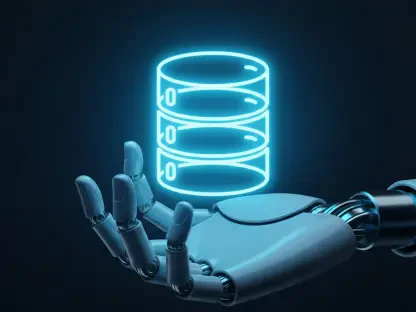Setting the Stage for Automation Innovation
Imagine a world where repetitive digital tasks—navigating complex software, filling out forms, or managing multi-step workflows across devices—are handled effortlessly by intelligent systems, freeing up countless hours for more creative endeavors. In today’s fast-paced tech landscape, this vision is no longer a distant dream but a tangible reality, driven by groundbreaking advancements in graphical user interface (GUI) automation. With modern interfaces becoming increasingly intricate and spanning mobile, desktop, and web platforms, the demand for adaptive, human-like automation tools has never been higher. This review delves into the transformative potential of cutting-edge GUI automation frameworks, spotlighting two pioneering solutions that are redefining how technology interacts with digital environments.
Core Concepts of GUI Automation Technology
GUI automation represents a pivotal leap in human-computer interaction, focusing on the ability of systems to interpret visual interfaces, execute tasks, and adapt to varied platforms without rigid scripting. At its essence, this technology relies on screen understanding—deciphering UI elements like buttons or text fields—and task execution, often mimicking human actions such as clicks or keystrokes. Its evolution from basic macros, which followed predefined steps, to sophisticated, learning-based systems capable of reasoning through dynamic scenarios, marks a significant shift in capability over recent years.
The historical trajectory of automation tools reveals a transition from static, rule-based approaches to adaptive frameworks that can handle unpredictability. Early solutions struggled with even minor interface changes, whereas modern systems leverage artificial intelligence to navigate ambiguity with greater finesse. This progression underscores a broader trend in technology toward seamless integration and efficiency across diverse digital ecosystems.
Significance lies in the role of GUI automation in enhancing productivity and user experience. By automating routine interactions, these tools minimize manual effort in industries ranging from business to accessibility, ensuring smoother engagement with ever-evolving interfaces. Their impact extends beyond mere convenience, shaping how digital environments are designed and utilized in an increasingly connected world.
Key Features of Leading GUI Automation Frameworks
Vision-Language Synergy in GUI-Owl
One standout in the field is GUI-Owl, a multimodal agent model built on a robust vision-language foundation. This framework excels in screen interpretation by combining visual perception with natural language processing, allowing it to identify UI elements from screenshots and reason through user instructions with remarkable accuracy. Its ability to localize buttons or text fields and make informed decisions mirrors human interaction, setting a new benchmark for intuitive automation.
A defining feature of GUI-Owl is its unified policy network, which integrates perception, planning, and action into a single cohesive system. Unlike older modular designs that often faltered during multi-turn tasks due to disjointed processes, this streamlined architecture ensures fluid navigation of complex interfaces. Such innovation proves critical in environments where ambiguity or frequent updates are common challenges.
Performance metrics further highlight GUI-Owl’s edge, with superior results in grounding tasks and question-answering compared to many contemporaries, including proprietary models. Its deployment across mobile, desktop, and web platforms demonstrates versatility, supporting actions like clicks and text entry with precision. This framework’s design not only enhances task completion but also paves the way for broader adoption in real-world settings.
Collaborative Dynamics in Mobile-Agent-v3
Complementing GUI-Owl is Mobile-Agent-v3, a multi-agent framework engineered to tackle intricate, multi-step workflows through specialized roles. This system coordinates distinct agents—each with a unique function, such as task decomposition, action execution, outcome evaluation, and memory retention—to manage long-horizon processes that often span multiple applications or platforms. Such collaboration enables a level of adaptability rarely seen in traditional automation tools.
The strength of Mobile-Agent-v3 lies in its dynamic planning and error recovery mechanisms. When faced with unexpected obstacles, such as a failed action or an interface change, the framework adjusts strategies in real time, ensuring continuity. This resilience is particularly valuable for tasks requiring persistent memory or navigation across diverse contexts, from mobile apps to desktop environments.
Benchmark evaluations reveal Mobile-Agent-v3’s dominance in end-to-end task completion, especially in challenging scenarios that demand flexibility. Its ability to orchestrate complex interactions with minimal human oversight marks a significant advancement, offering a glimpse into the potential of collaborative AI systems to handle sophisticated automation needs across varied digital landscapes.
Emerging Patterns in GUI Automation Development
A notable trend shaping GUI automation is the move toward intelligent, multimodal AI systems that integrate vision and language capabilities. These systems prioritize contextual understanding over rigid programming, enabling more natural interactions with interfaces. As reliance on such models grows, the field is witnessing a shift from isolated tools to comprehensive solutions capable of addressing diverse user requirements.
Scalability in training and cross-platform adaptability also stand out as critical focus areas. Modern frameworks are increasingly designed with robust data pipelines that evolve through virtual environments, ensuring models remain relevant amid changing interface designs. This adaptability caters to the growing need for tools that function seamlessly across mobile, desktop, and web contexts, reflecting user expectations for consistency.
Industry demands and consumer behavior further fuel innovation, pushing developers to create automation solutions that are not only efficient but also intuitive. The emphasis on user-centric design and real-time responsiveness highlights how market forces are steering the trajectory of these technologies, ensuring they align with practical, everyday challenges in digital interaction.
Practical Impact Across Industries
Real-world applications of GUI-Owl and Mobile-Agent-v3 showcase their transformative potential in varied settings. From executing precise actions like swipes on mobile devices to handling keyboard inputs on desktops, these frameworks support a wide array of interactions tailored to specific platforms. Their deployment in business workflow automation, such as streamlining data entry or app navigation, exemplifies their capacity to boost operational efficiency.
Specific industries, including accessibility services, benefit immensely from these tools. By automating interactions for users with disabilities, the frameworks enhance digital inclusion, enabling smoother access to technology. Case studies reveal successful implementations in customer service applications, where automated task handling reduces response times and improves user satisfaction across interfaces.
The versatility of these solutions is evident in their integration into existing systems, demonstrating readiness for widespread adoption. Their ability to manage both simple and complex tasks—whether in corporate environments or personal use cases—underscores a maturity that positions GUI automation as a cornerstone of modern technological advancement.
Hurdles and Constraints in Implementation
Despite their promise, GUI automation frameworks face significant challenges, notably in data availability for training robust models. High-quality datasets that capture the diversity of real-world interfaces remain scarce, often limiting the generalizability of these systems. Addressing this gap requires innovative approaches to data generation and validation to ensure consistent performance.
Technical complexities also arise in maintaining reliability across unpredictable environments. Interface updates or platform-specific quirks can disrupt automation, necessitating continuous adaptation. Ensuring uniform functionality in such dynamic conditions remains a persistent obstacle, demanding advanced algorithms capable of real-time learning and adjustment.
Efforts to overcome these barriers include self-improving data pipelines and reinforcement learning strategies. By simulating interactions in virtual settings and refining models through iterative feedback, developers aim to enhance resilience. These ongoing initiatives signal a commitment to bridging current limitations, fostering more dependable automation solutions for the future.
Looking Ahead in GUI Automation Evolution
The horizon for GUI automation holds immense potential, with the development of general-purpose agents that emulate human reasoning at the forefront. Such agents could transcend platform-specific constraints, offering universal interaction capabilities that redefine digital engagement. Anticipated progress in this area promises to unlock unprecedented levels of autonomy in task execution.
Advancements in model architectures and training methodologies are expected to drive further breakthroughs. Innovations like enhanced multi-agent coordination and refined vision-language integration could elevate the sophistication of automation tools. These developments aim to address existing gaps, ensuring systems are equipped for increasingly complex digital challenges.
Long-term implications extend to reshaping industries and user experiences. As GUI automation becomes more ingrained, its influence on workflow efficiency, accessibility, and societal interaction with technology will likely deepen. This trajectory suggests a future where seamless, intelligent interfaces are the norm, fundamentally altering the relationship between humans and digital systems.
Reflecting on the Path Forward
Looking back, the exploration of GUI-Owl and Mobile-Agent-v3 revealed a remarkable stride in overcoming the shortcomings of traditional automation tools. Their sophisticated designs, blending unified models with collaborative agent systems, tackled intricate challenges with notable success. Performance benchmarks underscored their competitive edge, often surpassing established solutions in critical tasks.
Moving ahead, the focus shifts to actionable steps for broader implementation. Stakeholders are encouraged to invest in scalable training infrastructures to address data scarcity, ensuring models adapt to evolving interfaces. Collaborative efforts between developers and industries also emerge as vital for tailoring these frameworks to specific needs.
Ultimately, the journey highlights the necessity of sustained innovation. Prioritizing research into adaptive algorithms and cross-platform compatibility offers a clear path to refining GUI automation. These considerations aim to solidify the foundation for a future where intelligent systems seamlessly integrate into daily digital interactions.









